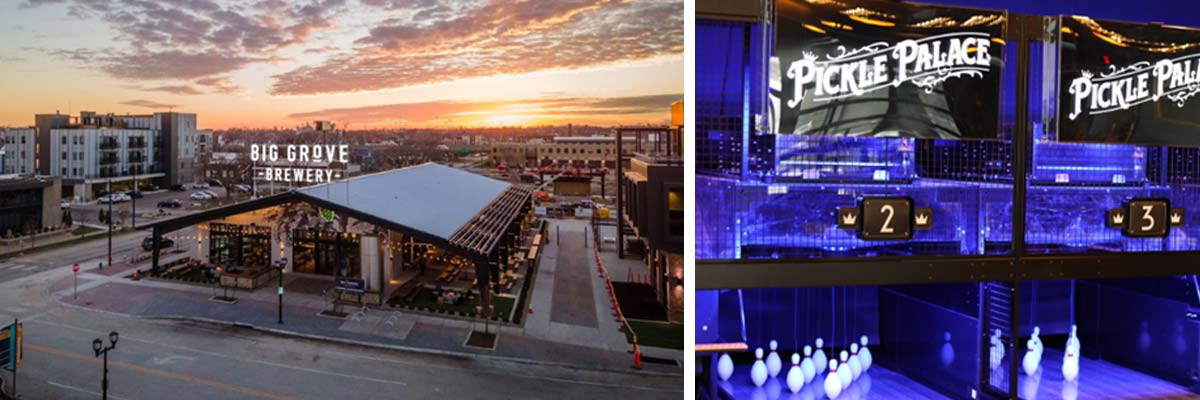
Revitalizing Iowa: The Story of Brownfield and Grayfield Grants
August 7, 2024 | Economic Development & Workforce

In the heartland of America, Iowa stands as a testament to agricultural prowess and industrial ingenuity. However, like many states, it faces challenges with aging infrastructure, particularly in the form of abandoned and underutilized properties, often referred to as Brownfields and Grayfields. These sites have become opportunities for renewal and economic development, thanks to the Brownfield and Grayfield Grants program. Officially referred to as the Redevelopment Tax Credit Program, the initiative has brought numerous exciting projects to Cedar Rapids.
Understanding Brownfields and Grayfields
Brownfields are properties where the presence or potential presence of hazardous substances, pollutants, or contaminants complicates their expansion or redevelopment. Common examples include former industrial sites, gas stations, and dry cleaners. Grayfields, on the other hand, are economically obsolescent, outdated, or underutilized properties, often former retail or commercial sites. Grayfields do not suffer from significant contamination but face challenges due to their age and infrastructure.
Recognizing the potential for revitalization, the Iowa Department of Natural Resources (DNR) and the Iowa Economic Development Authority (IEDA) collaborated to create the Brownfield and Grayfield Grants program. The program provides financial assistance toward the cleanup and redevelopment of dilapidated properties. The goal was clear: transform liabilities into assets, boost local economies, and enhance environmental quality. This year, the state government has set aside $15 million for developments across Iowa, with a maximum of $1.5 million in grants per project. Brownfields can receive up to 24% of qualifying costs, increasing to 30% if they meet green building requirements. Grayfields can receive up to 12%.
Strengthening Cedar Rapids
Cedar Rapids, known for its rich history of industry and arts, faced challenges with several sites in its downtown area. These sites, once centers for commercial activity, had become underutilized and deteriorated. Through assistance from the grant program, the city has rehabilitated these buildings, preserving their historic character while repurposing them for modern use. The result is a rejuvenating downtown district that blends the old with the new, drawing in tourists and boosting local commerce.
Alternatively, buildings in Brownfield or Grayfield developments can also be brand new. For example, Pickle Palace and Big Grove Cedar Rapids were part of a Grayfield project coordinated by First & First, LLC. Located in Kingston Yard, the $81.5 million development contains a swath of restaurants, hotels, and housing. The plot was empty since the 2008 flood, so First & First was awarded up to $1 million for assessment and cleanup.
The Grant Application Process
Applying for a Brownfield or Grayfield Grant involves several steps. Applicants must demonstrate the need for funding, provide a detailed plan for assessment and redevelopment, and outline the anticipated benefits to the community. The IEDA evaluates proposals based on their potential economic impact, environmental benefits, and feasibility. Successful applicants receive tax credits that can cover a significant portion of the project costs, making it feasible for even small communities to undertake large-scale revitalization efforts. If your company is looking to apply, our Economic Development team can help you every step of the way. Act fast, though! Applications for the program close on September 1.
Economic and Environmental Impact
The impact of the Brownfield and Grayfield Grants program extends beyond individual projects. Economically, these grants stimulate local economies by attracting businesses, creating jobs, and increasing property values. Environmentally, they reduce urban sprawl by encouraging the reuse of existing properties and mitigating pollution through thorough cleanup efforts. Socially, they enhance community pride and provide residents with improved amenities and services.
The Brownfield and Grayfield Grants program is a shining example of how targeted financial assistance can drive community revitalization in our communities. By transforming neglected properties into vivacious activity centers, the program addresses environmental and economic challenges and fosters a sense of renewal and optimism. As Iowa continues to innovate and invest in its future, the legacy of the Brownfield and Grayfield Grants will undoubtedly inspire others to follow suit, turning blight into opportunity and decay into development.